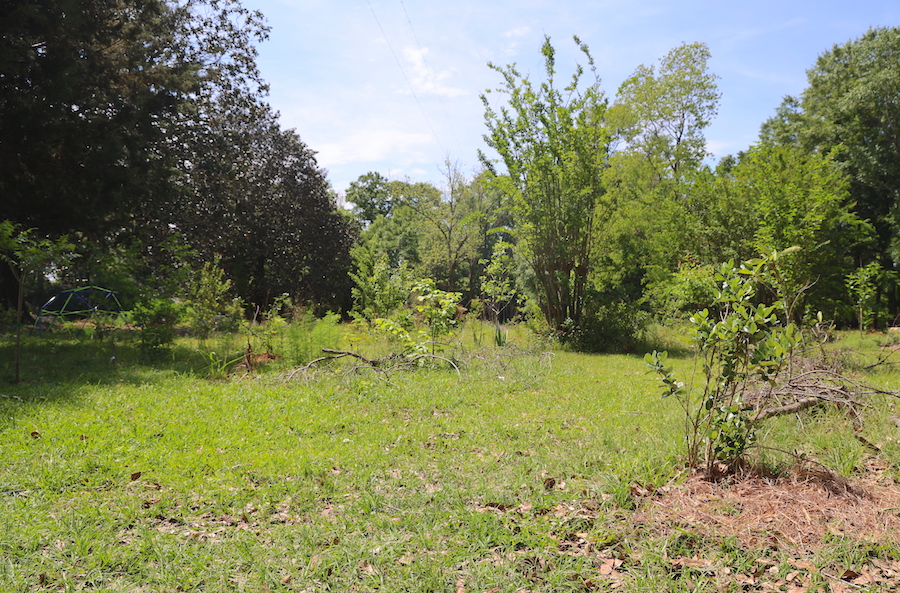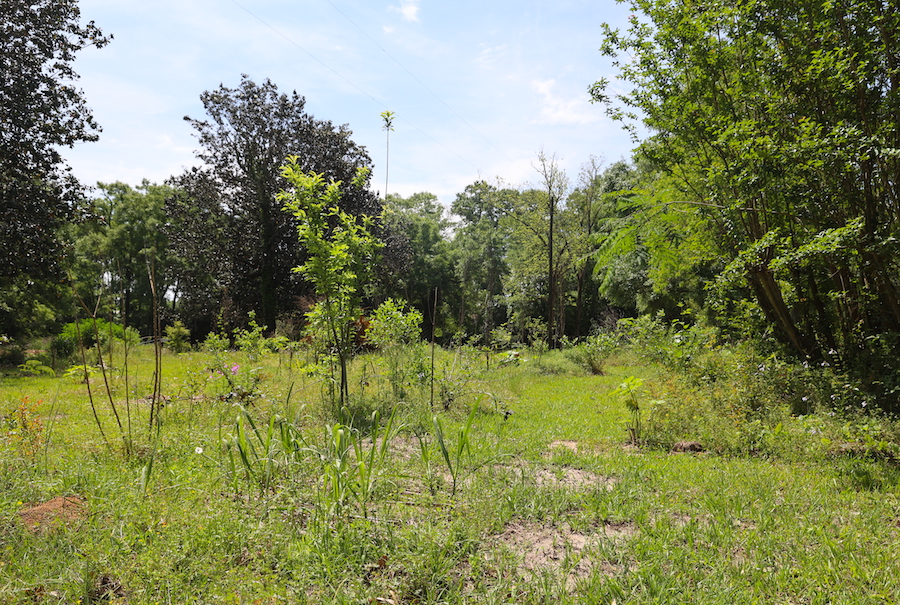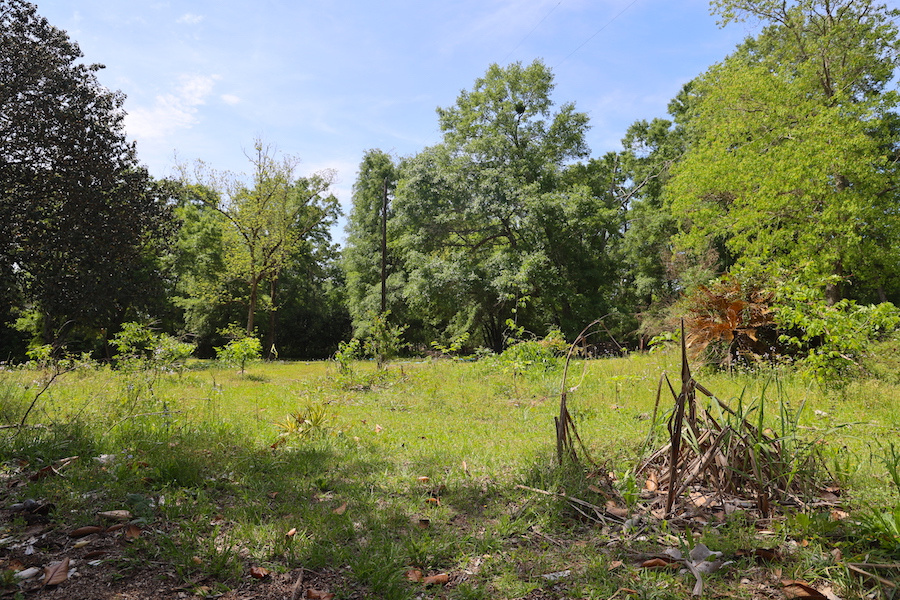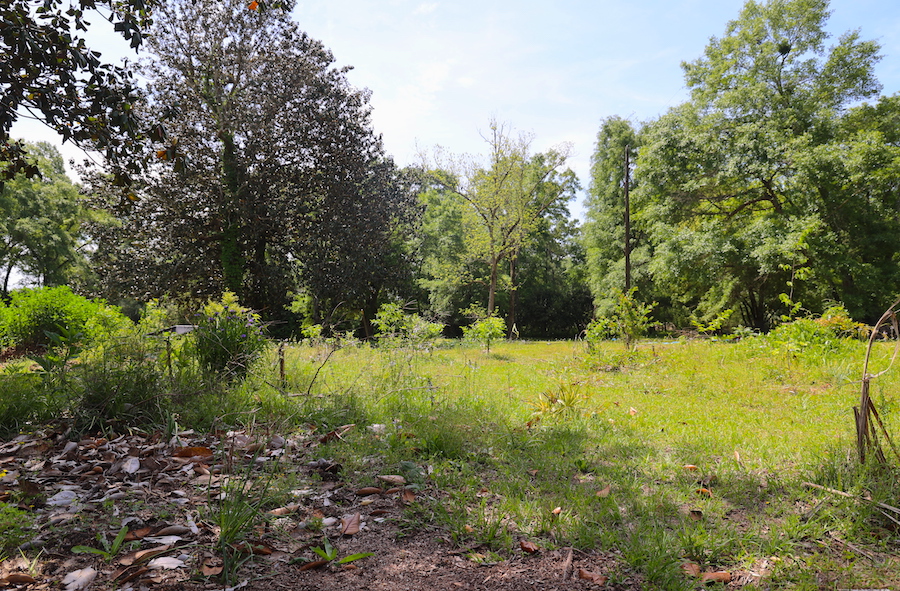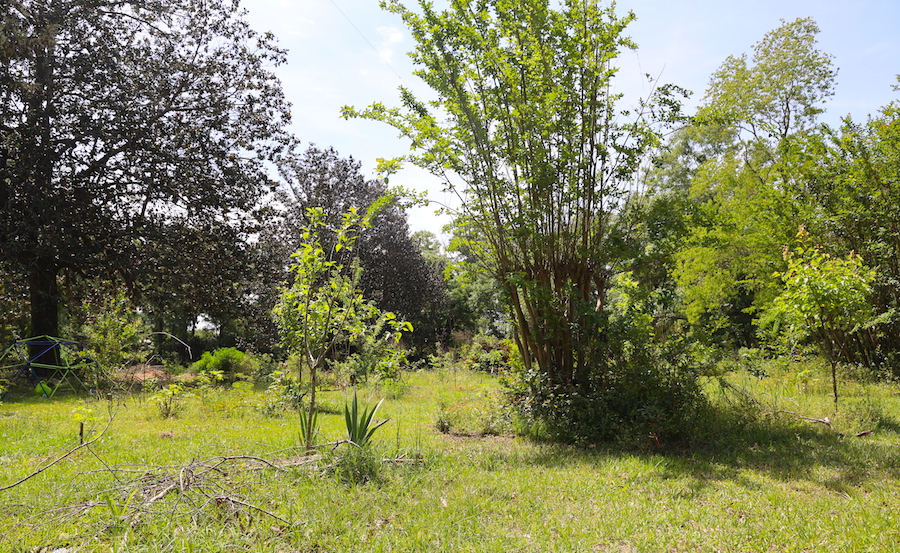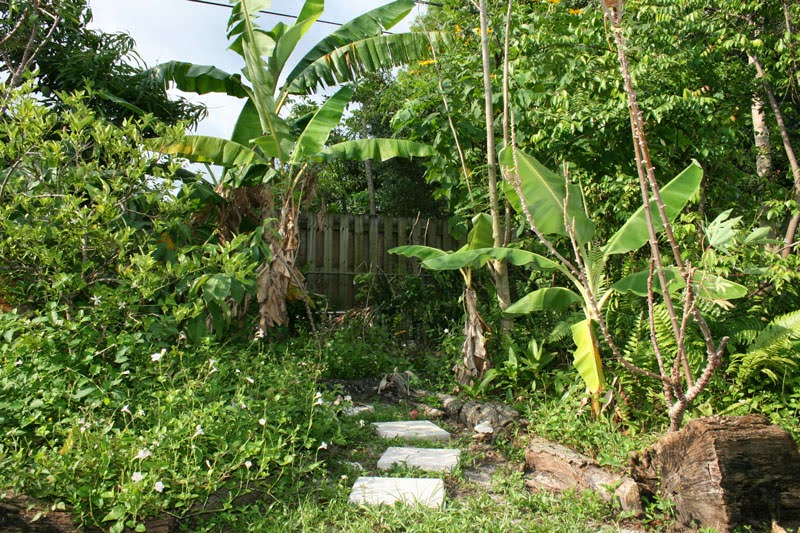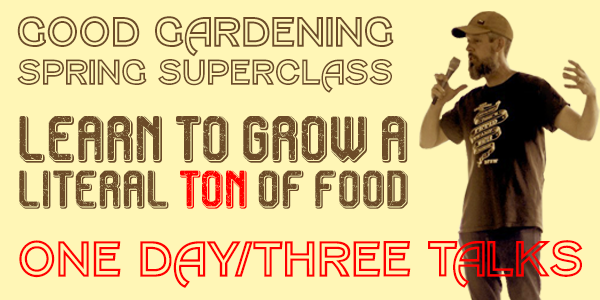Last year our drought kept us from doing much work on the food forest. It hit hard, starting at the end of June and continuing right through until our first frost. There was plenty we wanted to get done but couldn’t, yet the initial trees and shrubs came through it alive (thanks to some dragging the hose around) so we hope to continue our plans for phase two this year.
We’ve already added in a lot of Tithonia diversifolia plants, along with filling in the shrub layer with more plants. We’ve also put a few piles of compost out there and planted our mixed-up Seminole “compost pile” pumpkins on them.
Someone recently asked on YouTube why we have grass in our food forest:
I’m curious about why you grow the grass rather than Dutch Clover or something…  Are there any specific reasons to grow monocots over just legumes? I’ve thought a lot about it and I always kind of imagine my future food forest to be a lawn of various flowering nitrogen fixers between well mulched islands with fruit trees then berry bushes under those then herbs under those and then mushrooms under those. Someday soon I’ll do!
Are there any specific reasons to grow monocots over just legumes? I’ve thought a lot about it and I always kind of imagine my future food forest to be a lawn of various flowering nitrogen fixers between well mulched islands with fruit trees then berry bushes under those then herbs under those and then mushrooms under those. Someday soon I’ll do! 
The answer is simple. We started with grass, and the grass remains. It’s not easy to eliminate 1/4 acre of grass unless you’re willing to spray, tarp, or plow repeatedly. If we started with bare soil, we could have grown clover, but we didn’t. The grass will get shaded out over time, and we’ll also sheet mulch over it, as we’ve already done in some islands. The food forest gets some work on occasion as we have time – it isn’t our main job right now, as the Grocery Row Gardens get much more of the attention since they’re our main food producer.
But, this comment does relate to a “food forest hack” we developed back in our North Florida food forest project.
That is – plant your trees and shrubs, then mow paths between them to create order in the system. You can sort of see it in these pictures I took this morning:
Once I mow again, the paths will be much more evident.
We are developing “islands” in the food forest as it evolves, moving towards more permanent pathways. We just mow winding paths around the clumps of trees and shrubs we’ve already planted. Next, we’ll sheet mulch those islands to crush out the grass and add more fertility, like this:
I took that picture last year. Now that little goumi berry is three times the size and is covered in fruit.
Paths make even an un-mowed yard look deliberate. Mow nice meandering strips and you’ll create a nature walk. Or, get more serious and put down some permanent pavers or mulch, like we did in The Great South Florida Food Forest Project:
As the weather warms and the grass starts to grow in our yard again, we’ll have lots of sheet-mulching material. Stay tuned for food forest updates.
Also, I’m working on a food forest design course which I hope to announce soon. It’s a multi-part seminar sharing all you need to know on how to turn your yard into a jungle of food, without huge expense, planning, or lots of time involved.
Finally, my Spring Gardening Masterclass is THIS SATURDAY in Ft. McCoy, Florida – learn more and get tickets here.
(Finally, I was amused by this Tactical Garden Trowel. Nice.)



